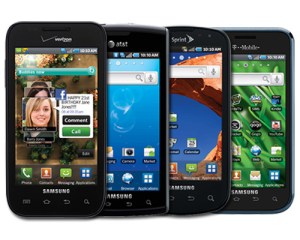
A new series of studies from network optimization firm Arieso finds that different groups of mobile users and mobile devices put different levels of demand on mobile data networks—and users of Google’s Android platform are among the hungriest of the bunch. Arieso’s studies used data utilization of the Apple iPhone 3G as a baseline, and found that Android devices typically score higher than either the iPhone 3G or iPhone 4 in terms of time connected to mobile networks, call volume, and the amount of data users upload and download. Users of Android phones also have the highest scores for uplink and downlink data, with Samsung Galaxy owners typically uploading 126 percent more data than iPhone 3G users and HTC Desire owners downloading 41 percent more data than iPhone 3G users.
“Smartphone subscriptions are rising and so too is subscriber appetite for mobile data,” said Arieso CTO Michael Flanagan, in a statement. . Since the launch of the iPhone 3G, we’ve seen a multitude of popular new smartphones arrive on the market, successfully driving app and service usage. It’s a trend that’s set to continue. Operators must now be able to quantify the impact of the devices they support, and how subscribers use them, and prepare their networks accordingly.”
Interestingly, Arieso also found that the amount of voice calling per subscriber has been relatively constant, indicating that users of new smartphone platforms and devices acquire those devices primarily for their data capabilities.
Users of Apple’s iPhone 4 don’t exactly get off the data-utilization hook: Arieso also finds that they typically make 44 percent more data calls and download 41 percent more data than iPhone 3G users. Moreover, iPhone 4 users spent a whopping 67 percent more time connected to data networks. However, in some other cases, Arieso found call data time on some handsets can be as high as 250 percent greater than typical iPhone 3G usage, with uplink and downlink data time as much as 130 and 40 percent greater, respectively.
Editors' Recommendations
- 5 phones you should buy instead of the iPhone 15 Pro Max
- How to try Samsung’s Galaxy AI on any iPhone or Android phone
- 2024’s coolest iPhone accessory is a throwback to old Android phones
- How to find downloaded files on an iPhone or Android phone
- iPhone Flip: what we know about Apple’s first foldable phone


